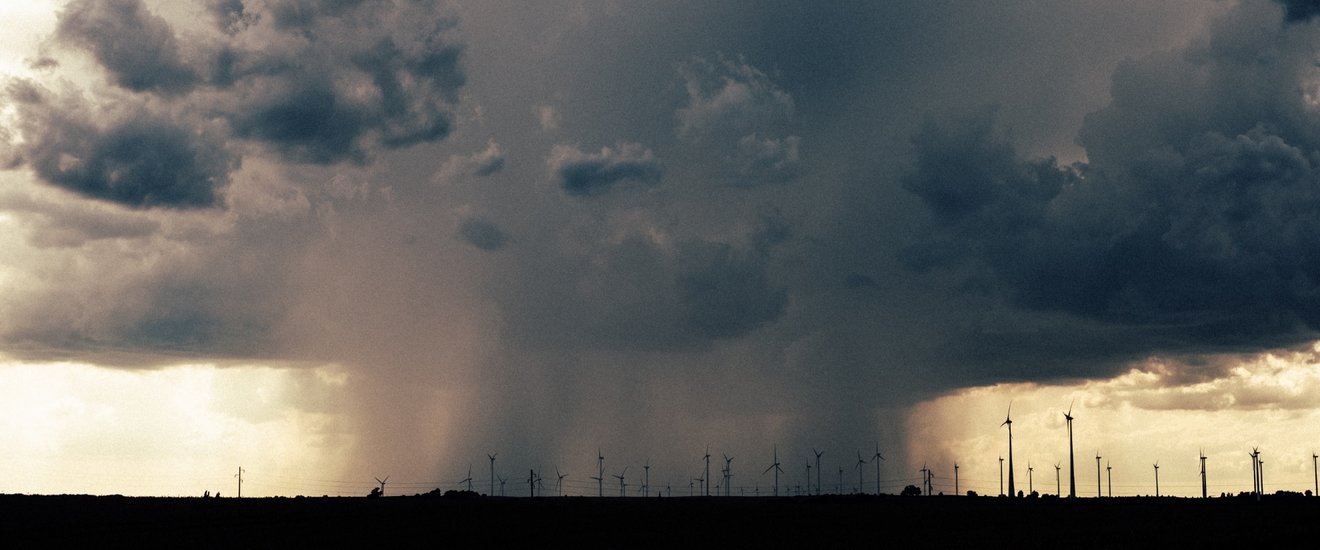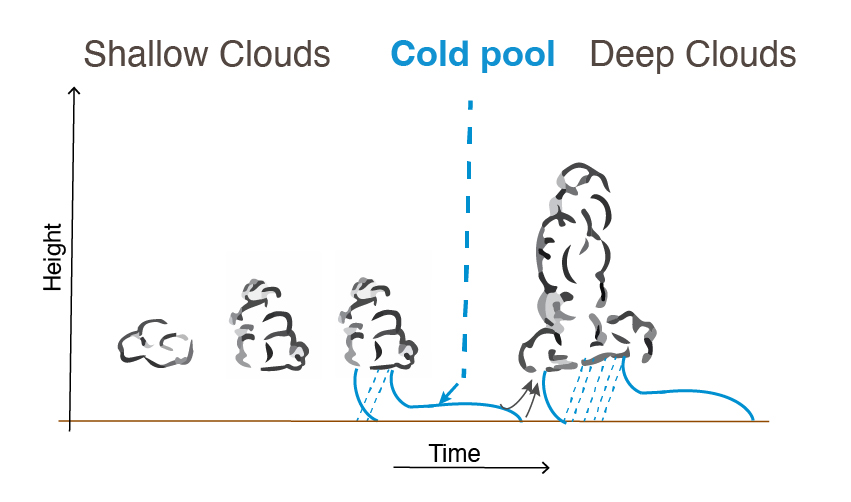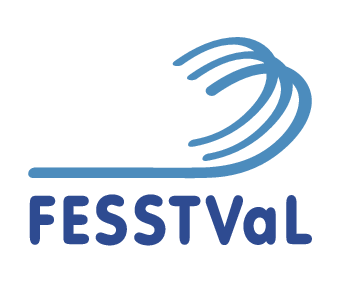FESSTVaL: a festival of close to 300 instruments coming together to peek into the making of mid-latitude thunderstorms
Mature thunderstorms appear as impressive weather phenomena: clusters of thunderstorms can extend over hundreds of kilometers in the horizontal and reach up to the tropopause, about 10 km, in the vertical. But the life of these impressive convective storms starts rather modestly, from small convective clouds of scale O(1 km). How these small and shallow clouds become deep mature clouds is not completely understood, but one idea is that the transition from shallow to deep clouds is helped by the formation of cold pools. Cold pools are areas of cold air that form at the Earth’s surface, below a thunderstorm, as a result of the evaporation of precipitation below cloud base. Being denser than the ambient air, cold pools propagate at the surface and favor the development of new, stronger thunderstorms at their edge (see Fig. 1). The edges of cold pools are also marked by strong wind, the well-known wind gusts associated with thunderstorms.
In numerical simulations of the atmosphere, cold pools are a key ingredient of the lifecycle of convection. But operational observational networks are mainly blind to cold pools as the typical distance between stations (O(25 km)) is coarser than the typical size of cold pools (O(1 km)) at the beginning of the lifecycle of convection. By deploying a dense network of instruments over a small region, FESSTVaL allowed for the first time to peek into the internal structure of cold pools.
FESSTVaL took place in Lindenberg (Brandenburg, near Berlin), which hosts the supersite of the German Meteorological Service, from May 16 to August 27 2021. It combined two networks (Fig. 2). The first network was a network of surface instruments comprising 80 autonomous cold pool loggers, 19 weather stations, 83 soil sensors, all deployed in a radius of 15km around Lindenberg, as well as 70 weather stations handed out to citizens. The autonomous cold pool loggers are instruments built by the group of Prof. Felix Ament at Universität Hamburg (UHH) to specifically capture cold pools by measuring their associated temperature and pressure perturbations. The second network consisted of vertically profiling instruments, including 9 Doppler lidars and 4 microwave radiometers, distributed at 3 supersites (Falkenberg, Lindenberg, Birkholz). Additional measurements were carried out by an uncrewed aircraft, multicopters and a small radiometer network during a four-week Intensive Observing Period.
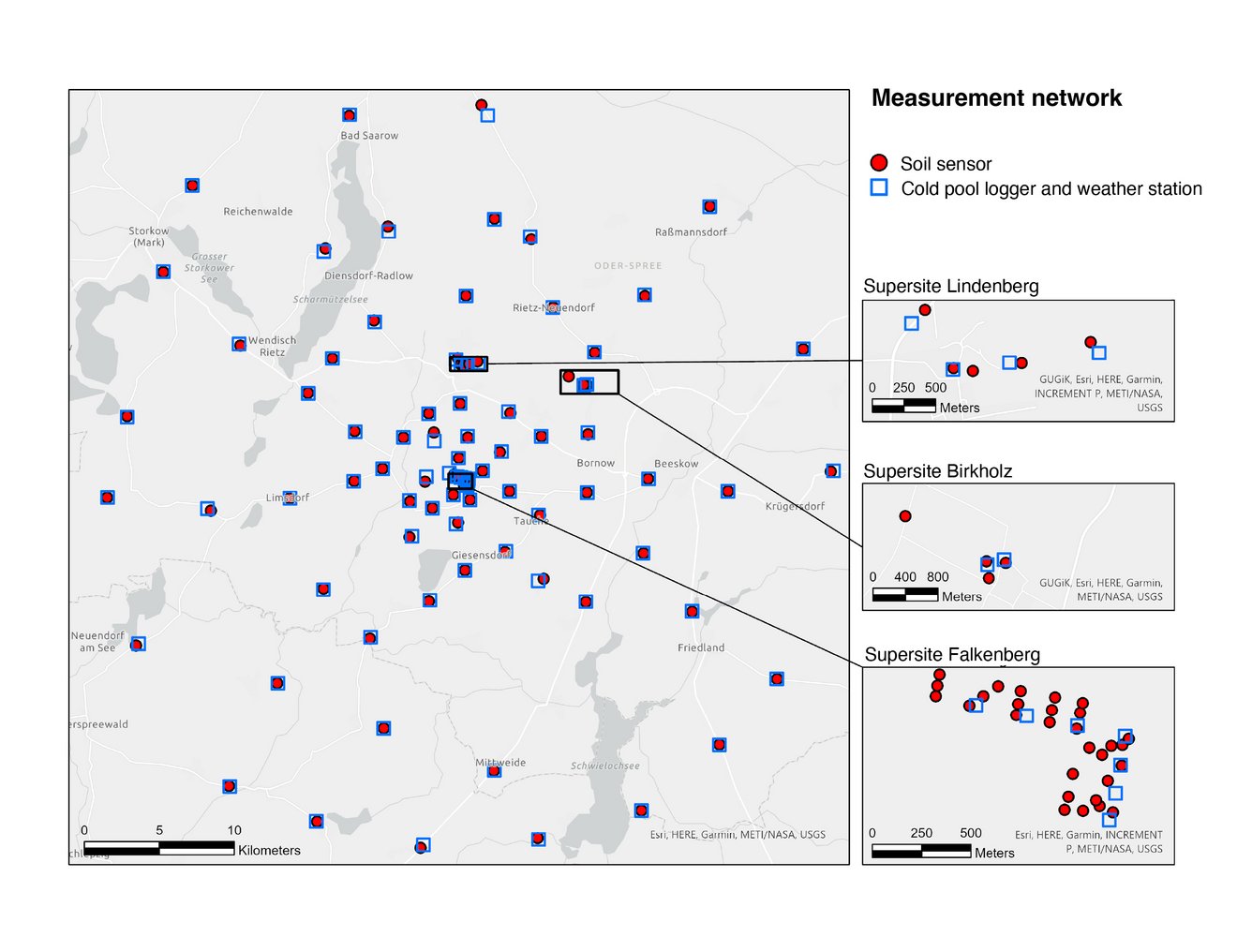
FESSTVaL not only targeted cold pools, but also the associated wind gusts and the overall development of the boundary layer during summer days. As key features, FESSTVaL:
- explored novel techniques to measure the targeted atmospheric variability in the horizontal by deploying dense networks of self-designed, self-built and low-cost instruments;
- applied novel retrieval algorithms for ground-based remote sensing in the vertical (e.g. to capture wind gusts);
- emphasized capturing the 4D structure of cold pools and wind gusts, which cannot be directly derived from operational measurements.
- involved citizens in the process of assembling and deploying instruments, e.g. with tutorial videos designed for school pupils.
This wealth of measurements is used to characterize the spatio-temporal variability of cold pools (Fig. 3), wind gusts, and the planetary boundary layer and compare this variability to its depiction in numerical simulations. The measurements are also used to assess the representativeness of point measurements from the operational network. Finally, the measurements are analysed to test hypotheses concerning the relationship between cold pools, the boundary layer, convection and the underlying surface, hypotheses previously derived from model simulation.
FESSTVaL involved 16 institutions and was preceded by two small field campaign, conducted in summer 2020 and 2019, to test the envisioned measurement strategies.
FESSTVaL is an activity initiated and led by the Hans-ErtelCentre. More information on FESSTVaL and the data collected during FESSTVaL are freely available via ICDC.
More Content
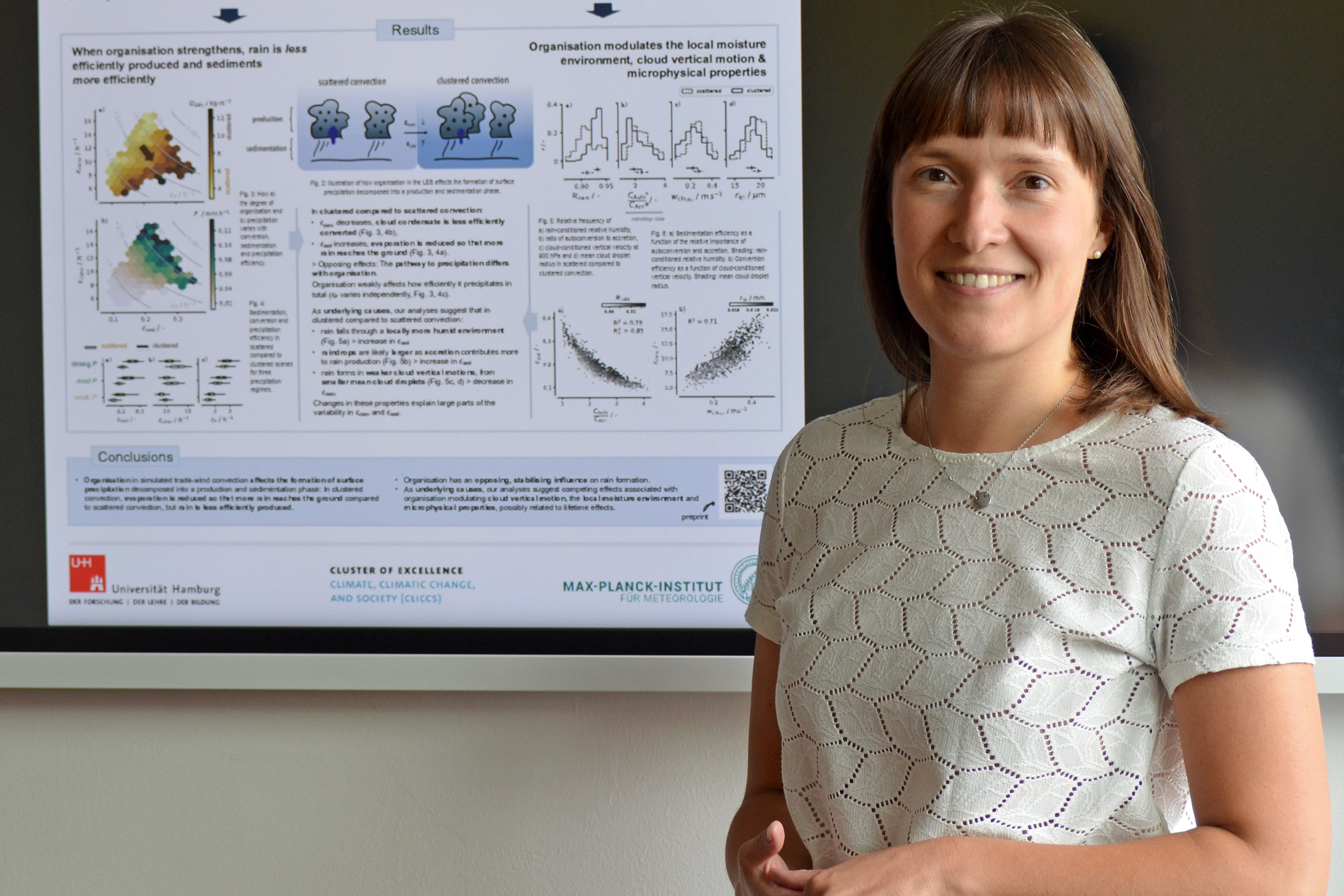
Jule Radtke receives 2023 CFMIP-GASS early career scientist award
Jule Radtke, postdoctoral researcher in the joint CLICCS working group on Drivers of Tropical Circulations of the Max Planck Institute for Meteorology…
![[Translate to English:] [Translate to English:]](/fileadmin/04_Kommunikation/01_Aktuelles/2023/230815_Sarah_Kang_Director/T_Sarah_Kang_Director_02.jpg)
Sarah M. Kang appointed as new director at Max Planck Institute for Meteorology
Prof. Sarah M. Kang joins the Max Planck Institute for Meteorology (MPI-M) as a director on 15 August 2023. Prof. Kang joins the MPI-M from the…

